|
Europan-europe 11 Results : Reconnections (2012)
17개국 47개의 도시를 대상으로한 11차 유로판의 41팀의 수상작과 54개의 입선작을 합해 총 95점의 작품과 더불어 출품작에 대한 심사위원의 평가와 관점을 볼 수 있다.
유로판 (Europan) 이란?
유로판은 유럽의 40세 이하의 젊고 건축가를 위한 창의적인 주거 계획 설계 경기 공모이다. 유로판은 젊은 건축가로 하여금 도시나 마을의 새로운 사회적, 경제적 변화를 제시하고, 문화와 문화간의 이해의 기회를 제공한다. 또한 건축가들의 네트워크를 형성할 수 있도록 하며 대상지에 대한 대중의 이해도를 넓히는데 공헌하고 있다.
현재까지 유로판 11 설계 경기 공모를 마친 상태이다.
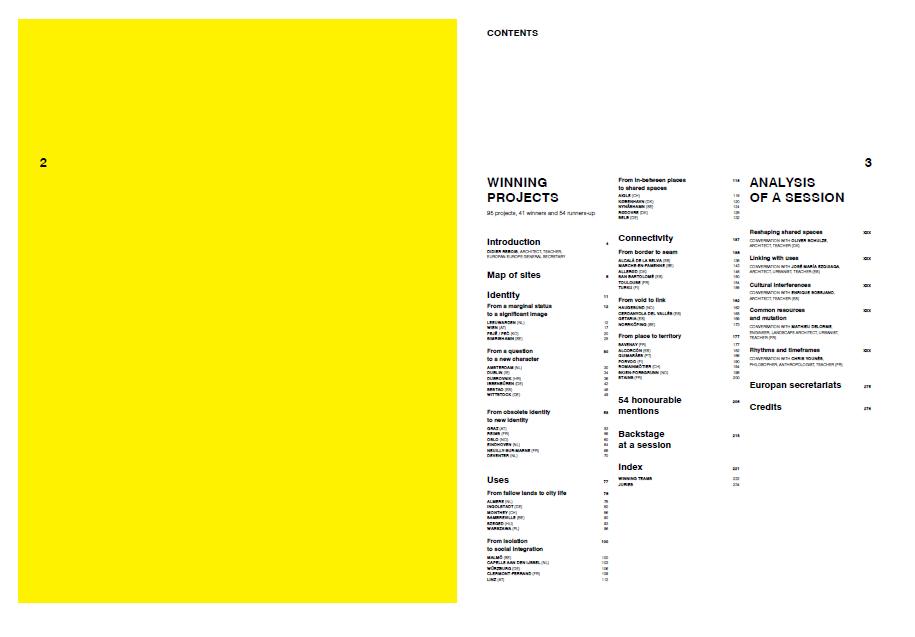
Europan-europe 11 Results : Reconnections (2012)
유러판 11의 주제로 “기존의 장소, 문화, 사회적 등등의 이질적 괴리를 건축활동이라는 새로운 충격을 발생시켜 이를 다시 연결시키다” 즉 RECONNECTIONS 이 대두 되었다. 유리되어 있는 것들을 접속되게 하고 분리 되어 있는 것들을 서로 이어지게 한다.
제 11차 유러판 설계경기는 양적으로는 17개국에 산재된 47개의 도시를 대상으로 설계경기 공모가 이루어졌다. 본서 유러판 11의 전반부는 41팀의 수상작과 54개의 입선작을 합해 총 95점의 작품을 선보이고 있다. 각 대상 주제는 세가지로 분류되는데, 장소적 특징성의 표현, 활용, 연결성이 평가되고 심사되었다.
더불어 간 단원은 설계공모 참가자의 출품작에 대한 충분한 설명과 심사위원들의 작품에 대한 평가의 관점 등이 공모가 진행되어온 전 과정별로 자세하게 언급 되어 있다.
본서의 후반부는 전형(상징)이 되는 수상작을 중심으로 출품작을 명확하게 해설하고 있다. 즉 공모 당시에 전제된 “재 연결 시도”를 다룬 5 출품작에 대하여 유러판 조직위원회의 전문가들 각자의 견해가 곁 들어 설명되고 있다.:
1 – 서로 공유되고 있는 공간을 재구성한다. Reshaping shared spaces, 이 과제에 대한 심사 기준을 정하였다 by 올리버 슐츠- Oliver Schulze ,건축가, Gehl 건축가 그룹 본부장(덴마크 코펜하겐 소재) architect, director of Gehl Architects in Copenhagen (DK)
오늘날 도시개발에 대한 지속가능한 접근 행위는 공공장소 즉 사회적 지역적 공유가능 공간을 필요로 한다. 주거자들은 이런 공간을 접하면서 공간과 세월이 주는 관계에서 나오는 질적인 삶을 나눠 갖게 된다. 이런 “나눠갖는 느낌 ,즉 같이 공유하는 장소” 는 새로운 현실이 전개되게 하는 데 여기서 언급한 공공의 장소는 우리가 역사적으로 배워왔던 구세대의 그것과는 그 함축하는 의미가 다른 것이다.”.
2 – 부지에 대한 활용도 측면에서 연계를 고려하다 Reconnecting with uses.. 이 과제에 관한 심사 기준은 건축가 호세 마리아 에즈콸리게 , 도시계획 건축가 ( 마드리드,스페인) -José María Ezquiaga, urban planner in Madrid (ES)
근자의 역동적인 도시 계획 프로젝트는 더 이상 어떤 제한된 공간뿐만 아니라 힘차고 율동적인 잠재력의 능력에 의해서 대두되게 되는데, 여기서 말한 잠재적 능력이라 함은 새로운 역동성을 끌어내는 것이라 할 수 있는데 이는 주어진 대상 부지와 그 부지에 함축된 맥락을 새롭게 유기적으로 그리고 사회적 관계를 다시 정립 할 수 있도록 기존의 프로그램과 상호 작용할 수 있는 그런 능력을 지칭한다.
3 – 상호 문화적 간섭 Cultural interferences, 이 과제에 관한 심사 기준은 건축가 엔릭 소바헤노 -Enrique Sobejano , 건축사무소는 마드리드 와 베를린 두 곳에 소재), architect in Madrid (ES)/ Berlin (DE)
문화적 상호 간섭 유발은 그들의 기존 환경에 잘 맞는 연결고리를 개발 하기 위한 전략이 잘 정의 될 수 있는 프로젝트안에 그에 필요한 요소들을 집어 넣을 수 있는 원동력이라고 말 할 수 있다.
문화적 상호 간섭 유발은 해당 부지의 물리적 특성이나 어떤 보다 정신적 요소로부터의 유래에 기초한다고 볼 수 있다. 문화적 상호 간섭 유발은 또한 지역적인 요구조건이나 그 지역의 사회적 활동의 토대 위에서 설명 되어야 한다.
4 – 일반적인 자원요소와 그것의 변천 Common resources and mutation, 엔지니어이며, 조경건축 설계가 이고 도시 계획가인 매튜 델로미 (프랑스) Mathieu Delorme, engineer, landscape architect, urban planner in Paris (FR)
우리가 부딪히는 자원의 유한함은…즉 자원은 점점 희소해지고 이는 가격의 갈등 문제를 수반한다. 이런 지구의 환경적 재앙은 우리들 도시 설계자로 하여금 도시 개발 프로젝트에 이런 점을 통합하여 다루어야 한다. 즉 자원(부지)을 공유함에 있어 그것을 다루는 기술에 있어 자원의 보존뿐만 아니라 도시와 자연이라는 서로 이질적 특성들이 양립 하면서도 같이 어우러지게 하는 탐구에 매진해야 한다.
5 – 도시의 주기적 순환과 시간 소요 Rhythms and timeframes, 이 과제에 관한 심사 기준은 철학자, 인류학자이며, Gerphau조사 연구소 소장인 클리스 요니, ChrisYounès, philosopher, anthropologist, director of the research laboratory Gerphau (FR)
오늘날의 도시에서 어떤 행위에 대한 복수의 시간 소요에 의해 일어나는 도시의 주기적 순환 상황은
즉 “24시간 동안 내내 눈 떠 있는 도시” 의 관점으로 심화되었다. 이런 현상에 비추어 도시 계획을 수립함에 있어 시간의 활용은 그것이 새로운 연결고리라는 도구로서 또한 일반 대중과 도시와 자연의 주기적 반복 현상의 관계를 개발해 나간다는 관점에서 놓쳐서는 안 될 중요한 고려사항이 되었다.
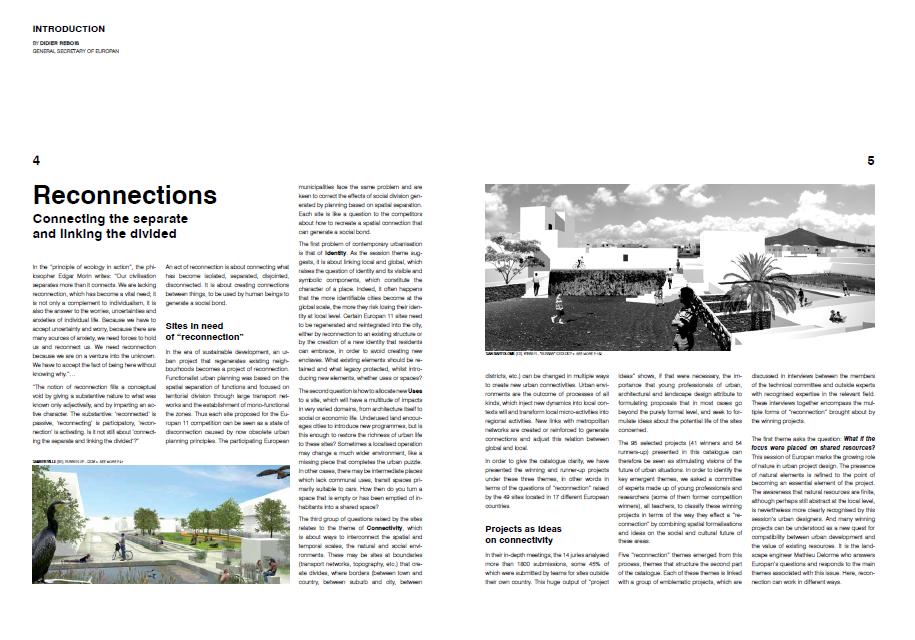
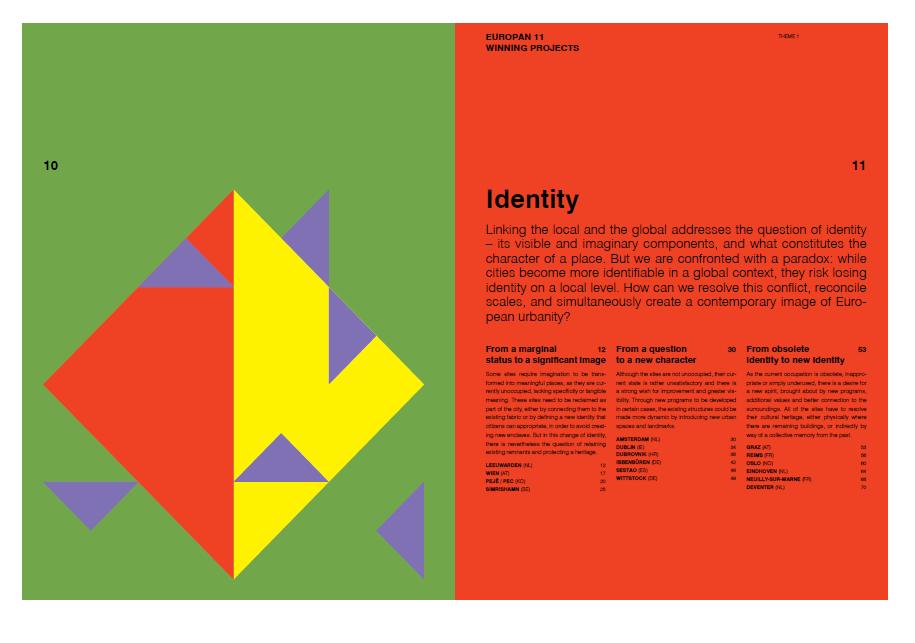
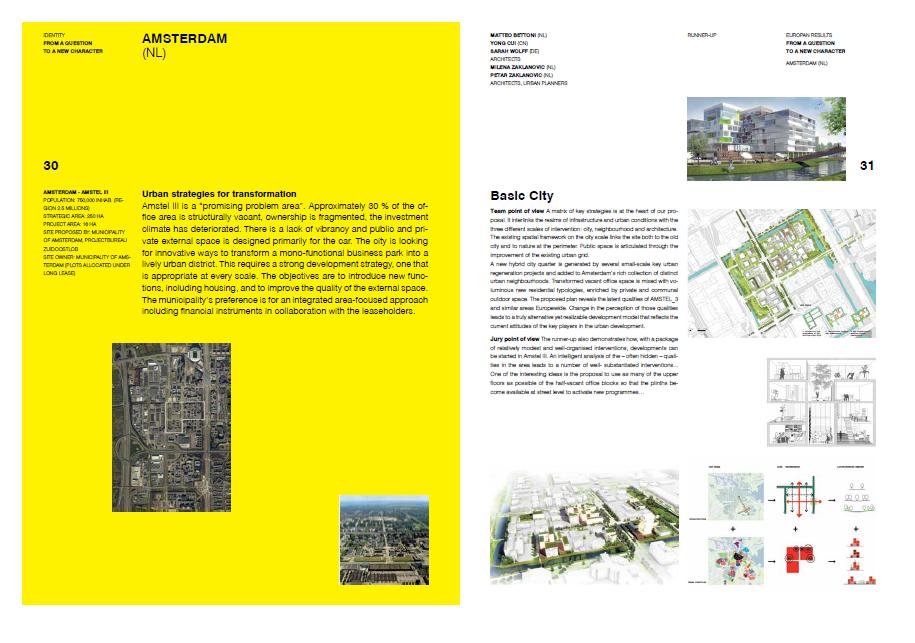
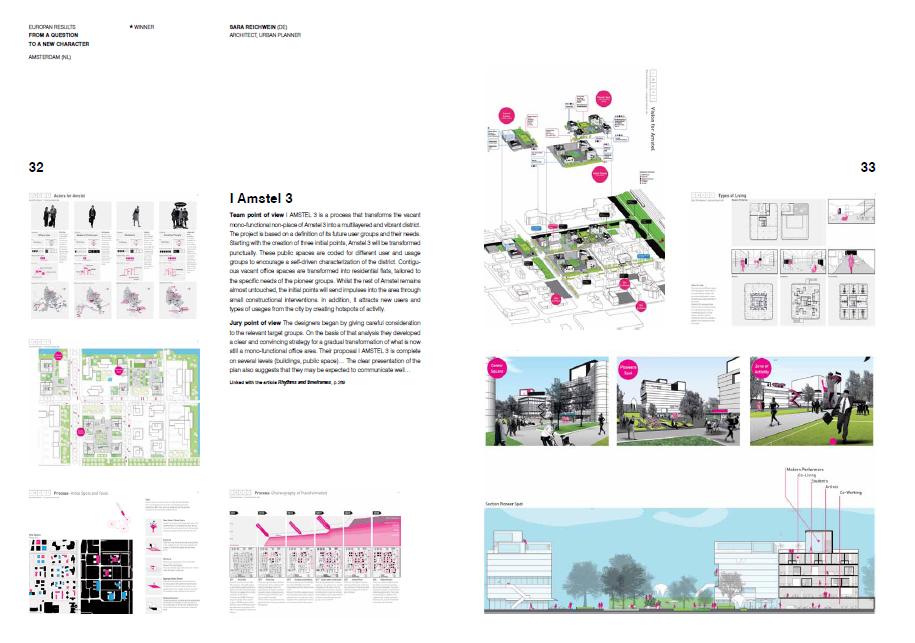
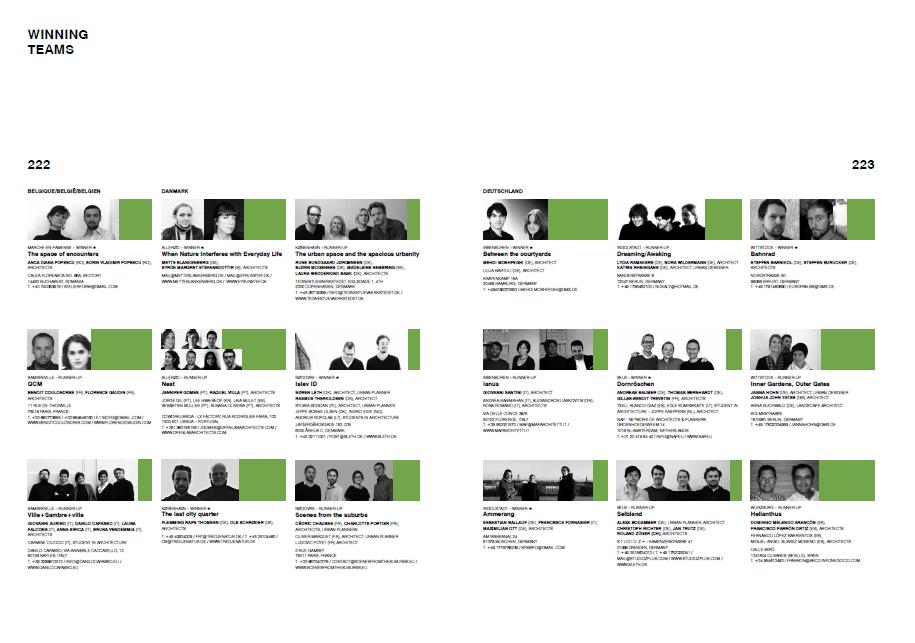
For the eleventh session of the competition, EUROPAN is publishing the catalogue of prize-winning projects in the 49 European towns situated in the 17 countries taking part.
The 95 prize-winning projects (41 winners, 54 runners-up) of the Europan 11 session are presented in first part of the catalogue, classified into site families (Identity / Uses / Connectivity). It provides access to all the session results with the points of view of the team and the jury.
The second part of the catalogue formulates interpretations around the most emblematic winning projects, based on 5 hypotheses of “reconnection”, accompanied by the perspectives of a number of European experts:
1 – Reshaping shared spaces, point of view of OLIVER SCHULZE, architect, director of Gehl Architects in Copenhagen (DK)
Today a sustainable approach to city development demands the introduction of social and community spaces, where people can share qualities relating to space and time. These“shared spaces”evolve new features that do not necessarily correspond to those associated with the historical term“public space”.
2 – Reconnecting with uses, point of view of JOSÉ MARÍA EZQUIAGA, architectand urban planner in Madrid (ES)
The dynamics of urban projects no longer arise only from their inherent spatial qualities but more often from their ability to potentiate a vibrant social life, introducing new activities that interact with existing programmes to re-establish new physical and social connections between the site and its context.
3 – Cultural interferences, point of view of ENRIQUE SOBEJANO, architect in Madrid (ES)/ Berlin (DE)
Cultural references act as generators that import elements into projects which can define strategies for reconnection to their environment. They can be based on the physical characteristics of the site or derived from more spiritual elements. They can be also narratives on social practices and local specificities.
4 – Common resources and mutation, point of view of MATHIEU DELORME, engineer, landscape architect, urban planner in Paris (FR)
The finite nature of resources raises the question of scarcity and therefore of value. With the global environmental crisis, it is essential that designers should incorporate them into urban projects, treating them as shared resources not only to be preserved, but to be enhanced in a quest for a hybrid compatibility between city and nature.
5 – Rhythms and timeframes, point of view of CHRIS YOUNÈS, philosopher, anthropologist, director of the research laboratory Gerphau (FR)
Generated by the multiple timeframes of activity in the contemporary city, urban rhythms have intensified to such a point that we now speak of 24-hour cities. The use of time should be taken into account in urban projects as a tool of reconnection, developing relations between citizens and urban and natural rhythms.
|